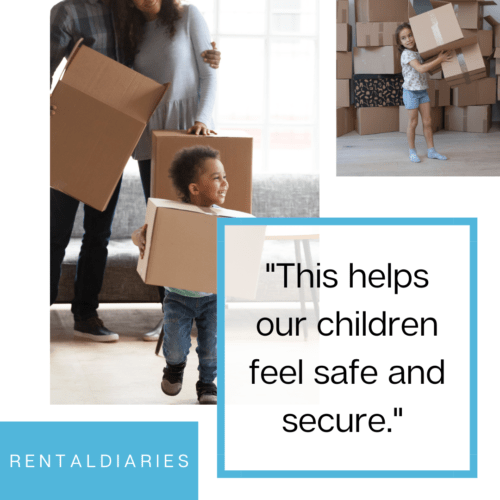Rental
Sweet rental5 Ways to Ease the Stress of Moving for Kids
As an adult, there are usually silver linings we associate with moving. I tend to get excited about big beautiful spaces just waiting for me to hang pictures on the wall. Prior to our last move I could actually envision my kids playing in the large backyard with a swing set. While moving is stressful, a new space is an opportunity for a fresh start. It’s a time of new beginnings and a chance to purge all of my old prom dresses. Those thoughts buildup the excitement. But on our last move, I can distinctly remember crying into my husband’s arms the day we left our last home.
We were moving forward, to a wonderful new home. It should have been pure happiness, but those feelings were woven with what felt like loss. How could this be? As an adult, we can recognize the emotional complexity of moving. But for children, the excitement of a fantastic new bedroom coupled with the loss of a home they are comfortable in can be confusing and overwhelming. Change is the most constant aspect of our lives. If you are struggling to help your child cope with the changes of moving, here are my top five tips to ease the transition.

1. Be Honest with your Kids
Often the things we worry about the most are the “unknowns”. Children are very perceptive and can understand if there is an increased level of stress or pressure at home, even when we don’t tell them. (Age appropriate) honesty is the best policy. Create opportunities to sit as a family and talk about the upcoming move.
2. Be the Adult
As parents we often put the needs and wants of our children ahead of our own needs. We will pick a smaller home in a better school district or give up our love of city life to move to a home with a yard. It is important to be mindful of our children’s need but be careful of how much power we give them. Children should be able to give valuable input but parents are ultimately the ones who are in charge. This helps our children feel safe and secure.

3. Allow Your Kids to Feel all the Feelings
We never like when our kids are hurt or upset, but this is an important part of our emotional experience. Acknowledge that your child might feel sad about leaving their house, friends and school. We want to sit with them in their sadness to help them feel supported. We want to be careful not to dismiss the uncomfortable emotions.

4. Talk about the Ways We Cope
We are the best role models for our children. Be open and honest about the ways we deal with difficult emotions. This can be going to the gym, talking with a friend or relaxing in the bath. See if you can come up with ideas together that may help them to cope with all the emotions they are feeling.
5. Create Family Routines
Develop family routines that can move with us. Routines help us to feel comfortable and safe. This can be as simple as family dinner, all you need is your family and food.
Moving can be fun, scary exciting, disappointing, and even motivating. As your child moves through their emotions, remind them you are moving through them together. This is another stage of parenthood that you will both grow from and with communication you very well may grow closer.
Meet Our Contributing Author
Shannon has worked in the mental health field since 2006. She earned a bachelor’s degree in Psychology from Syracuse University in 2006 and her master’s degree in Mental Health Counseling from Shippensburg University in 2009. Shannon is a certified secondary school counselor in the state of Pennsylvania. She has also earned the title of Nationally Certified Counselor as well as Licensed Professional Counselor. Shannon is credentialed with multiple insurance providers.
Shannon has worked as an outpatient therapist specializing in thought and mood disorders as well as working with clients who have experienced trauma across all ages. She works closely with multiple school districts to help provide the therapeutic component of Emotional Support programs as well as a trauma classroom within the public school setting.

0 Comments